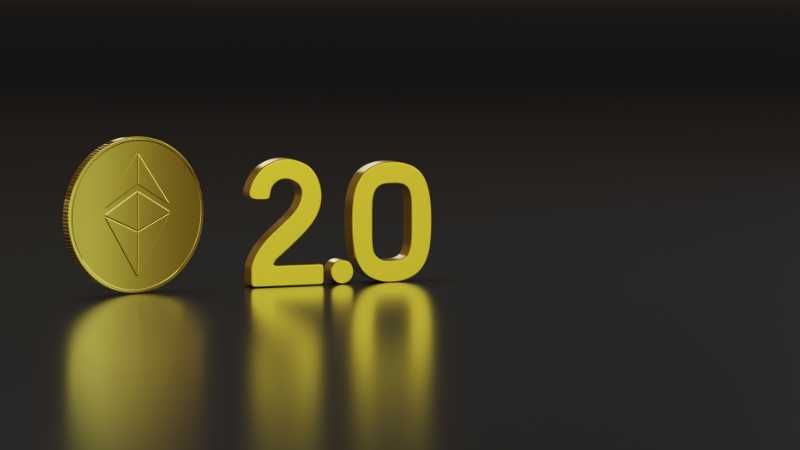Monday Feb 26 2024 07:41

8 min

As one of the most popular blockchain platforms, Ethereum has gained significant attention and usage. However, with the increasing demand for decentralised applications (dApps) and the limitations of the current Ethereum network, the need for an upgrade has become evident.
Ethereum 2.0, also known as ETH 2.0 or the Ethereum upgrade aims to tackle the issue of scalability by implementing several key changes. One of the major shifts is the transition from the current Proof of Work (PoW) consensus mechanism to Proof of Stake (PoS).
This change involves staking Ether (ETH) instead of mining, which not only reduces energy consumption but also enhances security and efficiency.
To facilitate this transition, Ethereum 2.0 introduces the Beacon Chain, a fundamental component that will coordinate the PoS consensus across the network.
The Beacon Chain acts as the central coordinator, managing the validators and ensuring the security and integrity of the Ethereum 2.0 system.
The revolutionary nature of Ethereum 2.0 lies in its potential to revolutionise scalability. The introduction of shard chains will enable parallel processing, allowing for increased transaction throughput.
This will enhance the network's capacity to handle a higher volume of transactions, making it more scalable and efficient than ever before.
Ethereum is undergoing a significant transformation with the introduction of Ethereum 2.0. At the core of this upgrade is the transition from the energy-intensive Proof of Work consensus mechanism to the more efficient Proof of Stake.
With Proof of Stake, Ethereum staking becomes the new way to secure the network and validate transactions. Instead of miners competing to solve complex mathematical problems, validators are chosen to create new blocks and secure the blockchain based on the amount of cryptocurrency they are willing to "stake" or lock up as collateral.
This shift to Proof of Stake brings several benefits to the Ethereum network. First and foremost, it drastically reduces energy consumption by eliminating the need for costly mining operations.
With Ethereum staking, anyone can participate in securing the network, as long as they are willing to commit and lock up a certain amount of ETH. This opens up new opportunities for small-scale validators and promotes a more decentralised network.
Additionally, the Serenity upgrade, also known as Ethereum 2.0, plays a crucial role in implementing the transition to Proof of Stake. The upgrade introduces the Beacon Chain, which serves as the backbone of the Ethereum 2.0 architecture.
It coordinates the consensus process and manages the validator set, ensuring the integrity and security of the network. Ethereum 2.0's transition to Proof of Stake represents a major step towards scalability and sustainability.
By embracing this new consensus mechanism through Ethereum staking and the Serenity upgrade, the Ethereum network is poised to handle a significantly higher number of transactions, making it more efficient and appealing for both developers and users alike.
Ethereum 2.0 is set to bring a revolution in scalability, addressing one of the most significant challenges faced by the Ethereum network.
With the launch of Ethereum 2.0, the long-awaited upgrade, the network will be equipped with innovative features that promise to enhance transaction throughput and pave the way for widespread adoption.

One of the key advancements in Ethereum 2.0 is the introduction of shard chains. These shard chains will enable parallel processing, dividing the workload across multiple chains.
By doing so, Ethereum will be able to handle a significantly higher number of transactions simultaneously, improving scalability and reducing congestion.
Each shard chain will have its own unique set of validators, responsible for securing transactions within that specific shard. This decentralised approach ensures that the network remains secure and robust while greatly enhancing scalability.
The upcoming launch of Ethereum 2.0 will mark a significant milestone in the evolution of the cryptocurrency landscape.
The scalability improvements offered by Ethereum 2.0 have the potential to unlock new possibilities for decentralised applications, decentralised finance (DeFi), and other innovative use cases.
As Ethereum 2.0 is rolled out, the cryptocurrency market is likely to witness a resurgence of interest and investment in Ethereum. The upgraded network will offer improved performance and greater capacity, attracting developers and users alike.

The scalability advancements brought by Ethereum 2.0 are not limited to Ethereum alone. This cryptocurrency upgrade has the potential to influence the wider cryptocurrency landscape, inspiring other projects to explore similar scalability solutions.
By addressing the scalability challenges faced by Ethereum, Ethereum 2.0 sets a precedent for the industry, pushing the boundaries of what is possible with blockchain technology.
The launch of Ethereum 2.0 signifies a crucial step towards a future where cryptocurrencies can achieve widespread adoption without compromising scalability or decentralisation.
Ethereum 2.0 holds tremendous promise for addressing the scalability challenges faced by the Ethereum network. With this upgrade, the transition from Proof of Work to Proof of Stake will bring about a more sustainable and energy-efficient network.
The introduction of the Beacon Chain sets the foundation for a decentralised future, where staking replaces mining, ensuring enhanced security and efficiency.
Ethereum 2.0's revolutionary features, such as shard chains, will pave the way for unparalleled scalability. These shard chains will enable parallel processing, significantly improving transaction throughput and expanding the network's capacity.
With these advancements, Ethereum 2.0 has the power to redefine the standards of the cryptocurrency landscape, catalysing further innovation and adoption.
Learn and trade with markets.com: the ultimate trading community.
“When considering “CFDs” for trading and price predictions, remember that trading CFDs involves a significant risk and could result in capital loss. Past performance is not indicative of any future results. This information is provided for informative purposes only and should not be considered investment advice.”